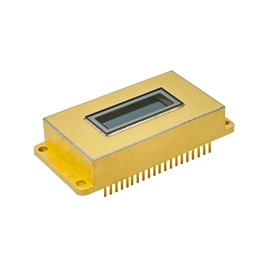The short-wave infrared zoom lens is also an optical lens. The short-wave infrared refers to the wavelength band between 900nm and 2500nm, which is invisible to the human eye.
Light is an electromagnetic wave, and short-wave infrared (SWIR) light is located in the non-visible light spectrum between near-infrared (NIR) and long-wave infrared (IR), about 0.9-1.7 μm, and acts like photons in the visible light range;
The short zoom swir imaging lenses are to gather the short-wave infrared light emitted by the object to the image sensor through the lens group, and the photoelectric signal is converted by the chip, and finally the grayscale image of the object is formed.
SWIR lenses are similar to visible light lenses, mainly composed of optical glass lenses, but the swir imager lens group must be specially designed, optimized and prepared according to the SWIR wavelength. 75%, while in the 900-1700 nm band, the transmittance is >80%;
SWIR imaging with lens sets designed for visible light, SWIR zoom lenses result in low image resolution (significantly lower resolution) and higher optical aberrations (and larger optical aberrations).
The lens group and other optical elements (filters, windows, etc.) of a SWIR lens can be manufactured using the same manufacturing process as the optical elements of a visible light lens, thus reducing manufacturing costs.
When focusing with a zoom lens, it is best to consider focusing the china ir sensor image at its maximum position first; that is, focus using the longest focal length end of the lens.
Then, reduce the focal length to the desired focal length of the short zoom lens when shooting. During this process, the image remains sharp at all focal lengths. Using this technique, it is easier to see if the image details are clear because it is focused on the largest possible image, so it is also the most accurate focusing method.
Zoom lenses are more prone to blooming than other types of lenses, so a proper lens hood is essential. Sometimes the occlusion caused by the hood is not visible on the viewfinder of the SLR camera, but it can be shown on the film. This situation is most obvious when using a short zoom lens, and a hood is often used.
Some lens hoods are effective at the long focal length end, but when zoomed to the short focal length end, a vignetting phenomenon caused by occlusion that cannot be seen on the viewfinder will appear on the photo.
Some zoom lenses require turning two separate control rings, one for focus and the other for focal length. The advantage of this arrangement is that once focusing is complete, the focus will not be accidentally changed by adjusting the focal length of the IR zoom lens.
Other zoom lenses simply move a control ring, turn it to focus, and slide it back and forth to change focus. Such "single ring" zoom lenses tend to be quicker and more convenient to operate, but are also usually more expensive. Care should be taken not to lose sharp focus when changing the focal length.
Use supports appropriately. When using a focal length of 300NM or longer, the infrared zoom lens should be fixed on a support such as a tripod to ensure stability during shooting.



